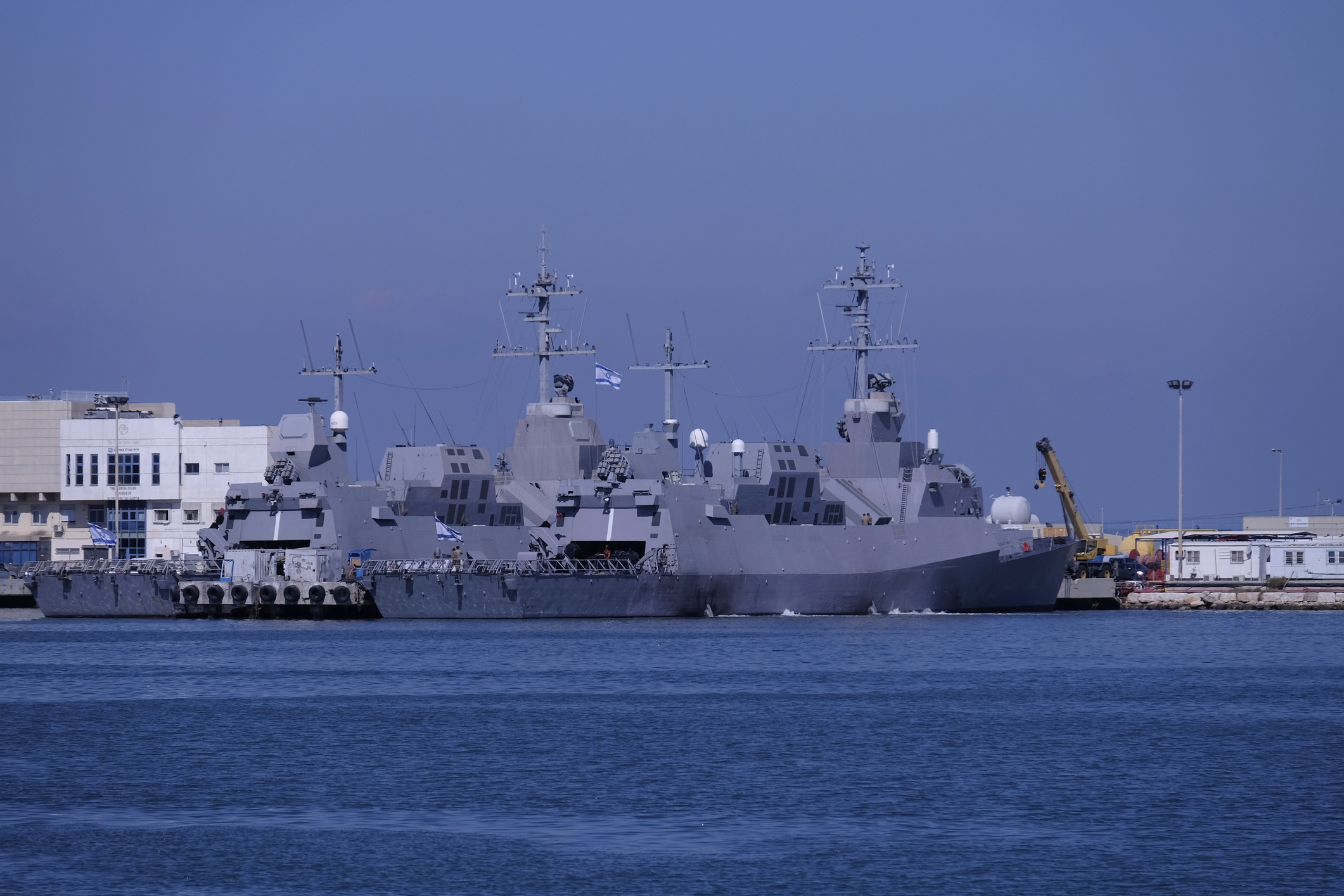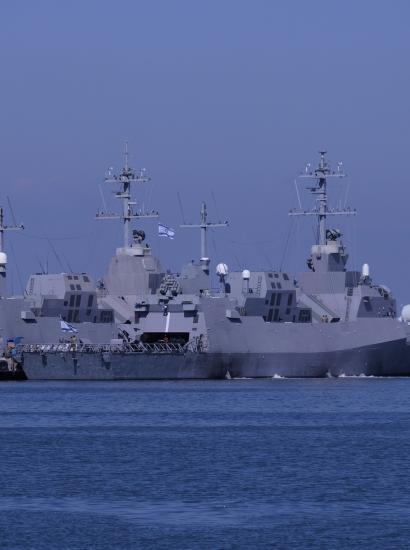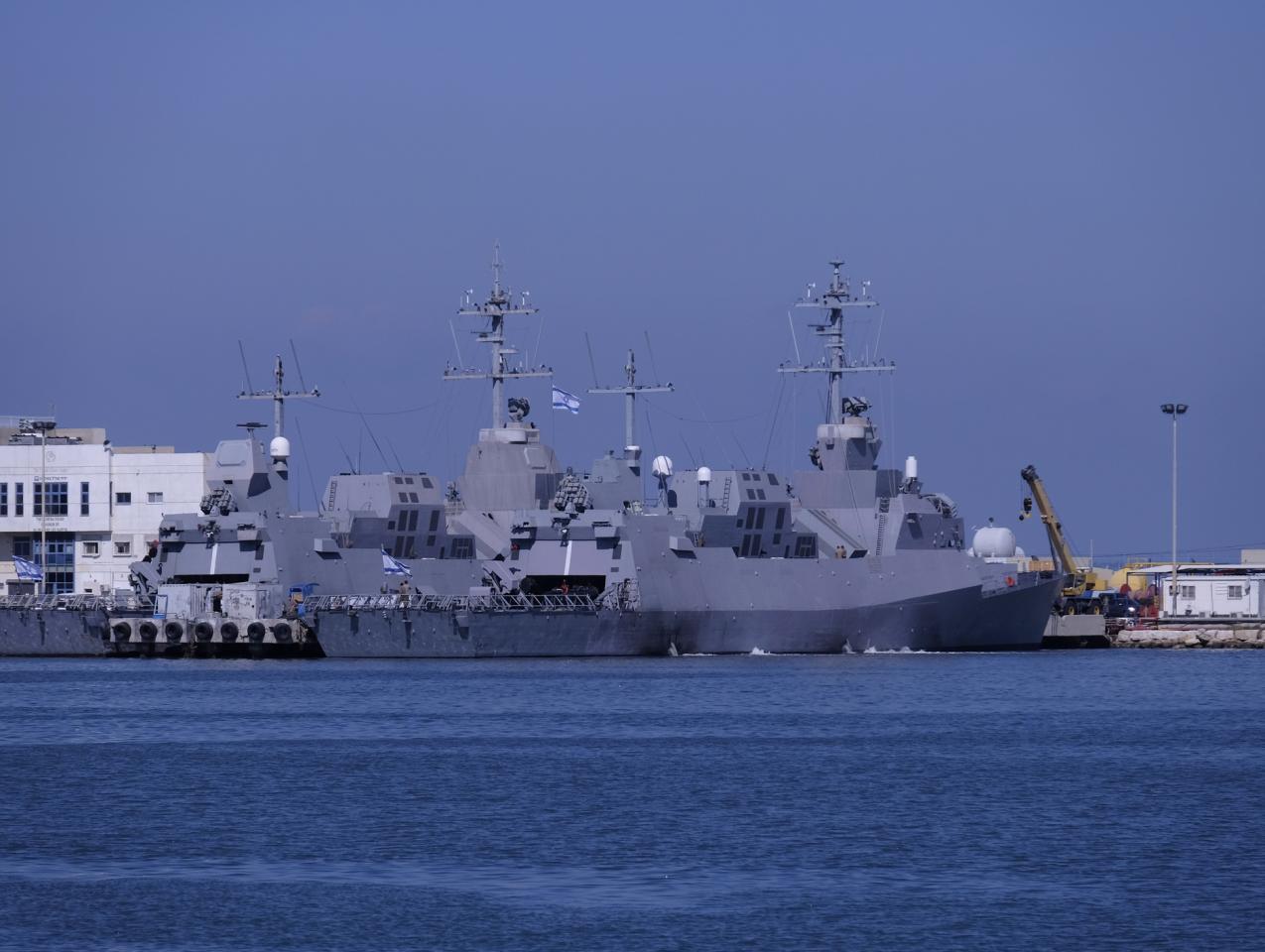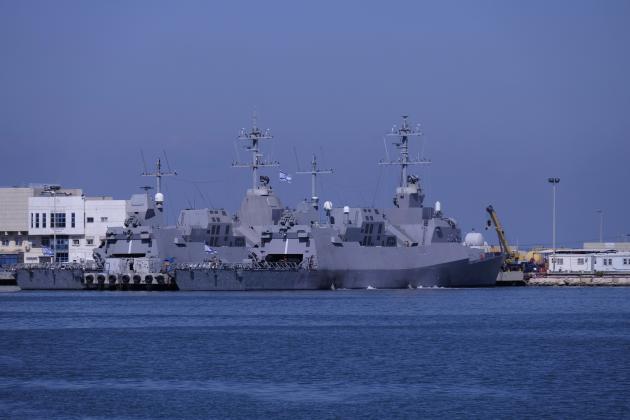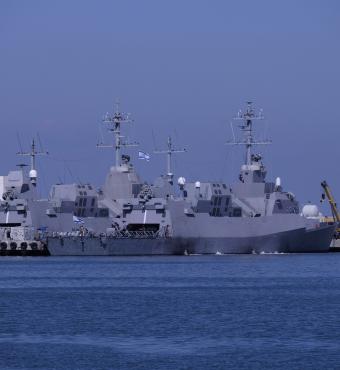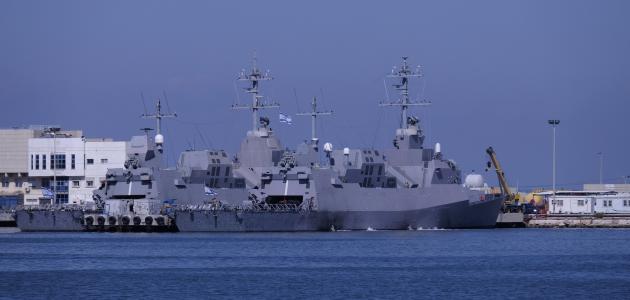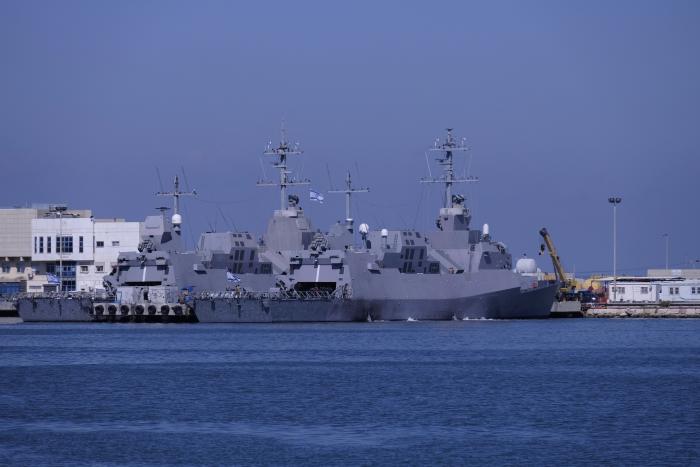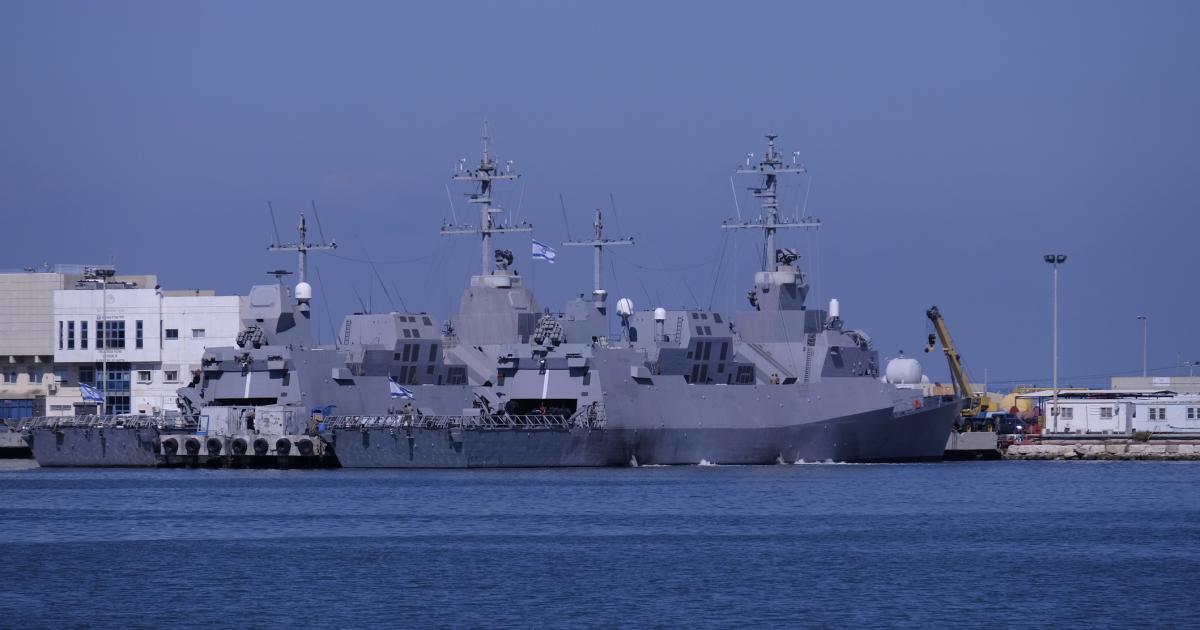- Middle East
- Determining America's Role in the World
Historically, Israel’s Navy has been more an afterthought than a headline. Throughout the decade prior to Hamas’s attacks on October 7, 2023, champions of Israeli sea power worked to change that. They sought to modernize the fleet and more tightly weave it into the broader fabric of the Israeli Defense Force. Since the war began, the Hebrew press has lauded the Navy’s performance both in support of ground forces and in guarding its maritime claims such as offshore gas fields. Yet despite these accolades, the Navy stumbled in one of its most basic missions: protecting Israel from seaborne infiltration. It also remains an open question whether it can credibly protect Israel’s strategic interest along the vital sea lanes of the Red Sea.
A New Israeli Navy
The Israeli Defense Force’s institutional memory is built around paratroopers, tanks, and the thunder of airpower. Even when its Sa’ar-class missile boats delivered tactical wins in 1973, the Navy was rarely part of Israel’s central war narratives.
The 1980s and 1990s brought upgrades: American-built Sa’ar 5 corvettes and German diesel-electric submarines added modernity but not centrality. When Hezbollah struck the INS Hanit with an Iranian C-802 missile during the 2006 war, killing four sailors, it was less a show of Hezbollah’s strength than a brutal reminder of Israeli naval complacency. The attack forced the Navy to rethink its assumptions and rewrite its doctrine.
A decade later, the Navy began to matter in new ways. The discovery of offshore gas fields turned the eastern Mediterranean from a defensive periphery into a critical economic front. Yet, the Israeli Defense Force lacked the capability to defend its newly valuable maritime claims. This spurred what some called Israel’s “turn to the sea.” The Navy expanded its submarine fleet and acquired the Sa’ar 6 corvettes, which are larger, more lethal, and far more integrated than the Sa’ar 5s. These ships are armed with two C-Dome batteries, the maritime cousins of the Iron Dome, and bristled with sensors, radar, and AI-assisted systems. As then Defense Minister Benny Gantz put it, the ships were tailored for “multidomain, multidimensional operations” that would allow them to relay information between the Navy, the Army, and the Air Force. One naval officer offered an even sharper distinction: “The Sa’ar 5 was built to protect itself. The Sa’ar 6 was built to protect others.”
Still, naval warfare remains a contest where simple math often matters more than even the most high-tech weapons. Hezbollah’s growing stockpile included thousands of drones, rockets, and precision-guided missiles. It could, in theory, have overwhelm any finite missile defense system. Even with the C-Dome, each Sa’ar 6 carries fewer than 80 interceptors. It would not take much to saturate them. Meanwhile, the Red Sea posed an even thornier challenge. Israel had fought wars in 1956 and 1967 to open its southern shipping lanes. Its new ships were capable of defending Israel from attacks, but whether they could secure Israeli shipping through the Red Sea and its southern choke point, the Bab el-Mandeb, remained unclear.
Successes Since October 7
Since the Hamas attacks of October 7, the Hebrew media have run several features casting the Navy in a new light. It was no longer a supporting act but an essential and integrated combat player. Over the last decade, the Navy built joint capabilities with the Army and Air Force. Naval company combat teams were embedded with ground forces, enabling real-time coordination and joint fire missions. As ground formations pushed into Gaza and Lebanon, the Navy covered their western flanks. According to one report, “the Navy fired forty thousand 25 mm shells from the Dvora patrol boats at targets on the coast.” It “fired another ten thousand 76 mm shells from the missile boats” and “dozens of surface-to-air missiles at targets in Gaza,” as well as “another two hundred such missiles at targets in Lebanon.”
Missile boats also cleared the way for Air Force sorties by neutralizing anti-aircraft systems. Submarines and surface vessels loitered off Syria and Lebanon, using their advanced sensors to pinpoint Hezbollah targets, including senior leaders, for precision strikes. In one case, Israeli naval assets helped Israel’s internal security agency, Shin Bet, to capture a high-ranking Hamas commander in Tripoli and to bring him back to Israel for interrogation.
In defensive roles, too, the Navy delivered. Its ships intercepted waves of missiles, drones, rockets from Gaza, Lebanon, Syria, Yemen, Iran, and Iraq. With the C-Dome and other missile defense systems online, Israel’s gas fields remained untouched and operational, offering a welcome reprieve to a battered wartime economy.
Through most of the war, Hezbollah’s threat loomed large, particularly the risk from Russian-supplied weapons like the supersonic anti-ship Yakhont missile, or the ever-present danger of a full-scale missile barrage capable of saturating Israel’s defenses. That threat materialized in September 2024, after Israel’s “pager attack” and the killing of Hassan Nasrallah. Hezbollah attempted a coordinated strike meant to cripple gas rigs, freeze ports, and disrupt all maritime movement. But the scale and complexity of the operation became its own undoing. The Israeli Defense Force has had difficulty preventing small one-off missile attacks by Hezbollah. However, its sensors clearly detected the large, coordinated buildup required for such a massive attack, and the Navy struck preemptively, destroying launchers and missile stockpiles before they could be fired.
At the same time, Israeli missile boats sank dozens of Hezbollah’s manned and unmanned boats, dismantling the group’s ability to operate in the Mediterranean Sea. Several months later, when Bashar al-Asad’s regime fell in Syria, the Israeli Navy carried out a joint operation with the Air Force to sink the Syrian Navy before it could fall into the hands of actors who might threaten Israeli interests.
Failures and Questions
For all its successes, the Navy’s shortcomings remain difficult to ignore. As it had learned in previous wars, not every problem can be fixed with technology. When Hezbollah disabled the INS Hanit in 2006, the Navy had failed to anticipate the threat because, as one officer stated, it considered Hezbollah’s ability to employ such a high-end weapon to be "something in the realm of fiction and absurdity." A similar failure of imagination marked the Navy’s actions on October 7th during Hamas’s assault by sea. Seven boats slipped north along the coast. Some were stopped. Others were not. Those that got through carried Hamas gunmen who reached Zikim beach and murdered 19 civilians, among them teenagers on a camping trip and an elderly man who had come to fish with his son.
At first, the Navy claimed it was unprepared for such an attack. However, later revelations have questioned such assertions. As one Navy officer later told a reporter, "We had intelligence on the scenarios that Hamas had prepared and was preparing for. We knew their tunnels that lead to the sea (to dive or board speedboats without the Israeli Defense Force seeing them) and we knew their naval units very well." One investigation revealed that an alert was raised the morning of the attack. It should have provided plenty of time to address the threat, but the Navy failed to send additional ships. As one officer reflected bitterly, “It was not a surprise attack by the Syrian and Iranian fleets,” for which the Navy had spent years preparing. High-tech gear cannot substitute for agile thinking.
An equally critical issue, both during the war and for the future of the Israeli Navy, lies in the Red Sea. Securing freedom of navigation in these waters has been an Israeli priority since its founding. Yet, despite its historic importance, the Navy seems to have had no real plan for securing it or the Bab el-Mandeb. After an extensive investigation, the Hebrew news site, Mako, concluded that “the Navy was unsuccessful and in fact barely tried to open the southern shipping lanes.” No serious solutions were ever proposed.
This vulnerability is not new. Although the Israelis fought wars in 1956 and 1967 to open the Straits of Tiran in the northern Red Sea, they had no answer when Egypt declared a blockade of Israel-bound ships at the more distant Bab el-Mandeb in the 1973 war. That crisis was resolved not by force, but by diplomacy during cease-fire negotiations.
Prior to October 7, 2023, Israeli analysts hoped that globalization and the internationalization of shipping would protect Israeli goods transiting these waters. They expected containerized shipping that blends cargo from many nations would deter targeted disruption. So far, that bet has held, at least partially. The United States and allied forces have stepped in. Yet, history counsels caution. Israel cannot assume great powers will always agree to secure its maritime interests. In 1967, the United States deflected Israel’s request for help in opening the Egyptian blockade of the Red Sea, even after Israeli leaders made clear that they considered the blockade a casus belli that would spark a general war. More recently, in the 21st century, during the height of the War on Terror, the U.S. Navy declined Israel’s request to intercept a weapons smuggling ship from Iran called the Karine A as it transited the Red Sea. Even with U.S. ships in the vicinity, Washington said no. There is no guarantee that Washington will say yes in the future.
Conclusion
Naval warfare is rare, and success at sea is never assured. Israel’s new fleet performed well against a familiar enemy in Hezbollah. Its upgraded platforms and sensors worked as designed. Yet, technology cannot substitute for judgment, and strategy cannot be built on high-tech weaponry alone. The Red Sea remains an exposed flank, and since October 7th, even the U.S. Navy and its maritime partners have struggled to secure it. For Israel, the lesson is clear: its sea power is only as effective as its alliances and the creative spirit behind it. It will need both if it hopes to command its maritime future.
Samuel Helfont is the author of Iraq Against the World: Saddam, America, and the Post-Cold War Order (Oxford University Press, 2023). He is an Assistant Professor of Strategy and Policy in the Naval War College’s program at the Naval Postgraduate School.







